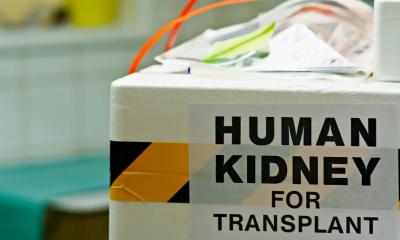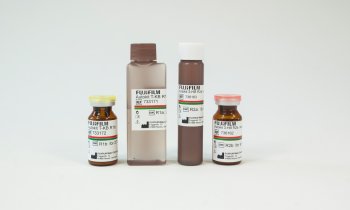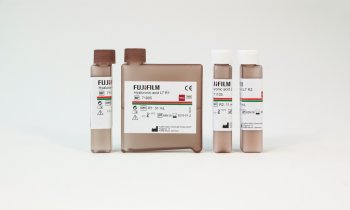News • Organ preservation
Perfusion machine takes time pressure off liver transplantation
Since early 2023, it has become standard practice at the Universitair Medisch Centrum Groningen (UMCG) to perform virtually all hour-long liver transplants during daytime.
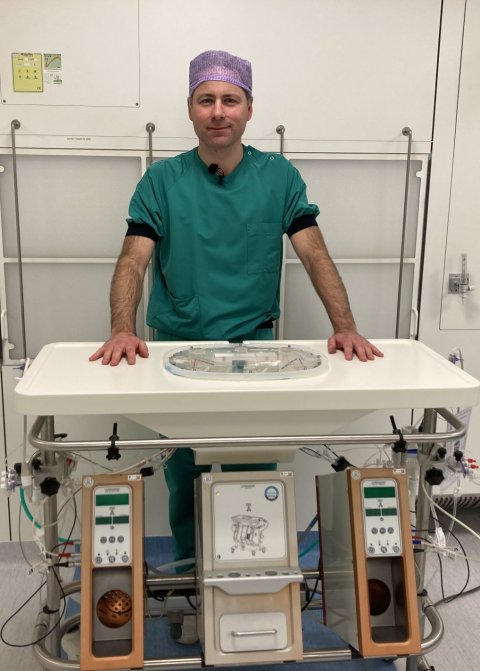
Image source: UMCG
This is possible because donor livers can be preserved for much longer time in a special perfusion machine at the UMCG, without compromising donor liver quality. Research at the UMCG, published in eClinicalMedicine, has shown that it is safe for recipients. Results of liver transplantation after prolonged preservation were as good as those of livers transplanted immediately after the donor livers became available. UMCG is the first hospital worldwide to use hypothermic oxygenated machine perfusion to schedule liver transplants during the day by default.
Donor livers can only be preserved outside the body for a short time, a maximum of 6 to 10 hours. Therefore, the organ must be transported to the recipient as soon as possible. Because of this, there is always great time pressure with transplants. The UMCG has had an "Organ Preservation & Resuscitation" unit since 2015. This is a dedicated room in which donor organs, such as livers, lungs, and kidneys are treated with oxygen-rich fluid in perfusion machines for several hours before transplantation. With the new perfusion techniques, organs can not only be better and longer preserved, but also improved and even tested just before transplantation. As a result, more organs can be made suitable for transplantation.
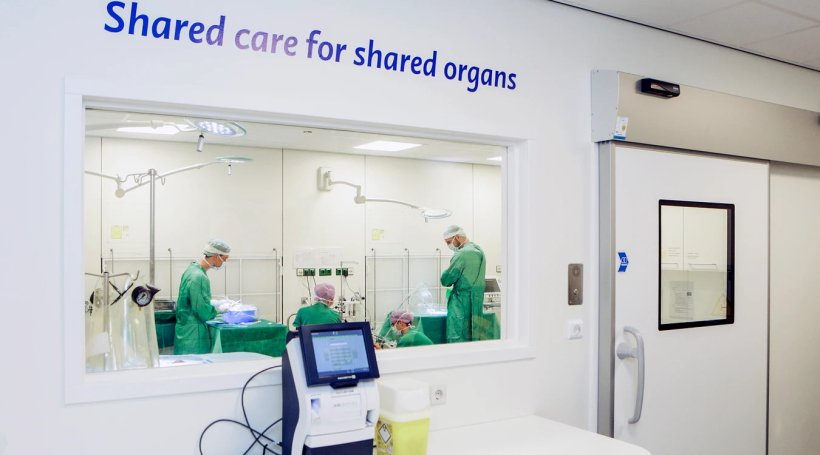
Image source: UMCG
The UMCG has been investigating since November 2020 whether it is safe to preserve donor livers much longer in a perfusion machine. Here, two methods of organ preservation and transplantation have been compared. If the donor liver became available before 4 p.m., preparations for surgery began immediately and surgery followed immediately. This often meant an operation that continued into the night; a liver transplant takes an average of 10 hours. When the donor liver became available after 4 p.m., it was connected to the hypothermic machine perfusion device immediately upon arrival at the UMCG. Surgery then did not begin until the next morning, prolonging the preservation time to as much as 20 hours. This study investigated whether this was safe: a donor liver was deliberately longer preserved, rather than transplanted immediately. Both donors and recipients were similar in both groups in terms of age, gender, etc.
Liver transplantations no longer have to be performed immediately after a donor organ becomes available. Performing such complex and high-risk surgeries in the middle of the night is no longer necessary as a result
Vincent de Meijer
The study found that there was no difference in transplant outcome for the liver transplant recipients. Prolonged preservation of donor livers did not compromise donor liver quality and was equally safe for recipients. No complications associated with the prolonged preservation time occurred within 30 days of surgery. And after at least one year of follow up, all patients were still alive with a functioning liver.
The benefits of the new prolonged preservation method are great. According to Vincent de Meijer, professor of surgery and head of the liver transplant program at UMCG, it potentially transforms the field by turning liver transplantation from an acute surgery into a daytime operation. ‘Liver transplantations no longer have to be performed immediately after a donor organ becomes available. Performing such complex and high-risk surgeries in the middle of the night is no longer necessary as a result. A major advantage of this is that fewer on call teams are needed during the night shift. Furthermore, in case of complications or unexpected events during surgery, we no longer need to call up additional colleagues. This is because during the day many skilled colleagues are literally around the corner to assist. It also leads to fitter surgical teams and thus makes an important contribution to the sustainable employability of all those directly involved.’
These outcomes led to the fact that from January 1, 2023, almost every liver transplant at the UMCG was performed during the day. The UMCG is the first hospital worldwide to use hypothermic oxygenated machine perfusion to preserve donor livers for daytime transplantation as standard. De Meijer: ‘Of the 83 liver transplants we performed at UMCG this year, 79 were done during the day. Even transplants in children, including re-transplants where a patient receives a donor liver for the second or third time. Only in very exceptional, acute situations has a transplant been performed immediately.'
De Meijer says that after more than a year, there appear to be two additional benefits. 'First, it makes the threshold for combined transplantation, such as heart-liver transplantation or lung-liver transplantation much lower than before. Because the liver can now be safely preserved longer, the heart or lung transplant can be performed first. Then we can subsequently perform the liver transplant without time pressure. And further, the study shows that the operations in which a liver was transplanted during the day took almost two hours shorter on average than transplants at night. This is probably a result of the fact that the teams are slightly fitter during the day.’
Source: Universitair Medisch Centrum Groningen
12.01.2024




